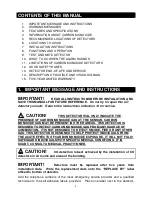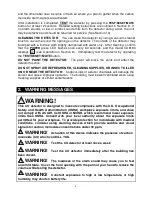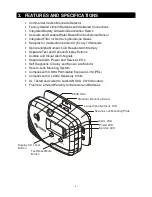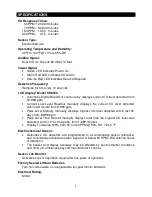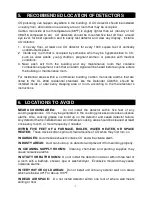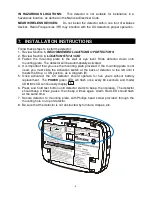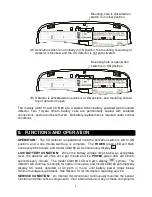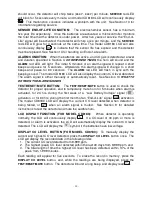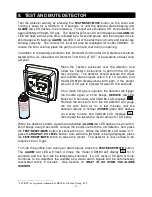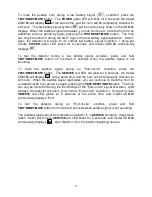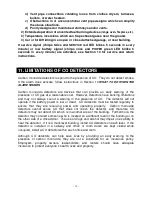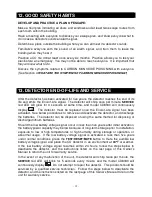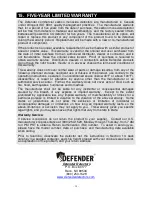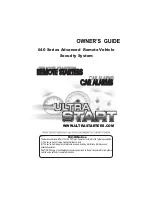
- 13 -
10. WHAT TO DO WHEN THE ALARM SOUNDS
If alarm signal sounds:
1) Operate test/reset/mute button;
2) Call your emergency services (tel. no.
_______________________________
)
[fire department or 911];
3) Immediately move to fresh air - outdoors or by an open door or window. Do
a head count to check that all persons are accounted for. Do not re-enter
the premises or move away from the open door/window until the emergency
services responders have arrived, the premises have been aired out, and
your detector remains in its normal condition.
4) After following steps 1- 3, if the alarm reactivates within a 24 hour period,
repeat steps 1-3 and call a qualified appliance technician
(tel. no.
________________________________
) to investigate for sources of
CO from fuel burning equipment and appliances, and inspect for proper
operation of this equipment. If problems are identified during this
inspection, have the equipment serviced immediately. Note any combustion
equipment not inspected by the technician and consult the manufacturers'
instructions, or contact the manufacturers directly, for more information
about CO safety and this equipment. Make sure that motor vehicles or
forklifts are not, and have not been, operating in an attached garage or
adjacent to building.
MANUAL RESET:
You can temporarily silence an audible alarm signal by pressing the
TEST/RESET/MUTE
button. The
ALARM
red LED will flash 4 times, and the model
CD8180 will display
for 5 seconds and then continue to display the current CO level
detected from 30 to 999 ppm. If 50 ppm or more continues to be detected, the audible
and visual alarm signals will be automatically reactivated within 5 minutes. Do not wait
to see if the alarm is reactivated; follow above instructions immediately.
AUTOMATIC RESET:
If a CO alarm activation is not manually reset, the horn will
sound for at least 15 minutes. After 15 minutes, the detector will automatically reset
itself and return to normal operation if the CO level detected drops below 10 ppm.
If the building has been temporarily vacant and you return to find the detector(s)
sounding, do not enter the building. Call the Fire Department from another
location.
Do not re-enter the building for any reason until you have been assured
that it is safe to do so.
Conditions which can result in transient CO situations:
1) Excessive spillage or reverse venting of fuel burning appliances caused by
outdoor ambient conditions, such as:
i) Wind direction and/or velocity, including high gusts of wind. Heavy air in
the vent pipes (cold/humid air with extended periods between cycles).
ii) Negative pressure differential resulting from the use of exhaust fans.
iii) Simultaneous operation of several fuel burning appliances competing for
limited internal air.


